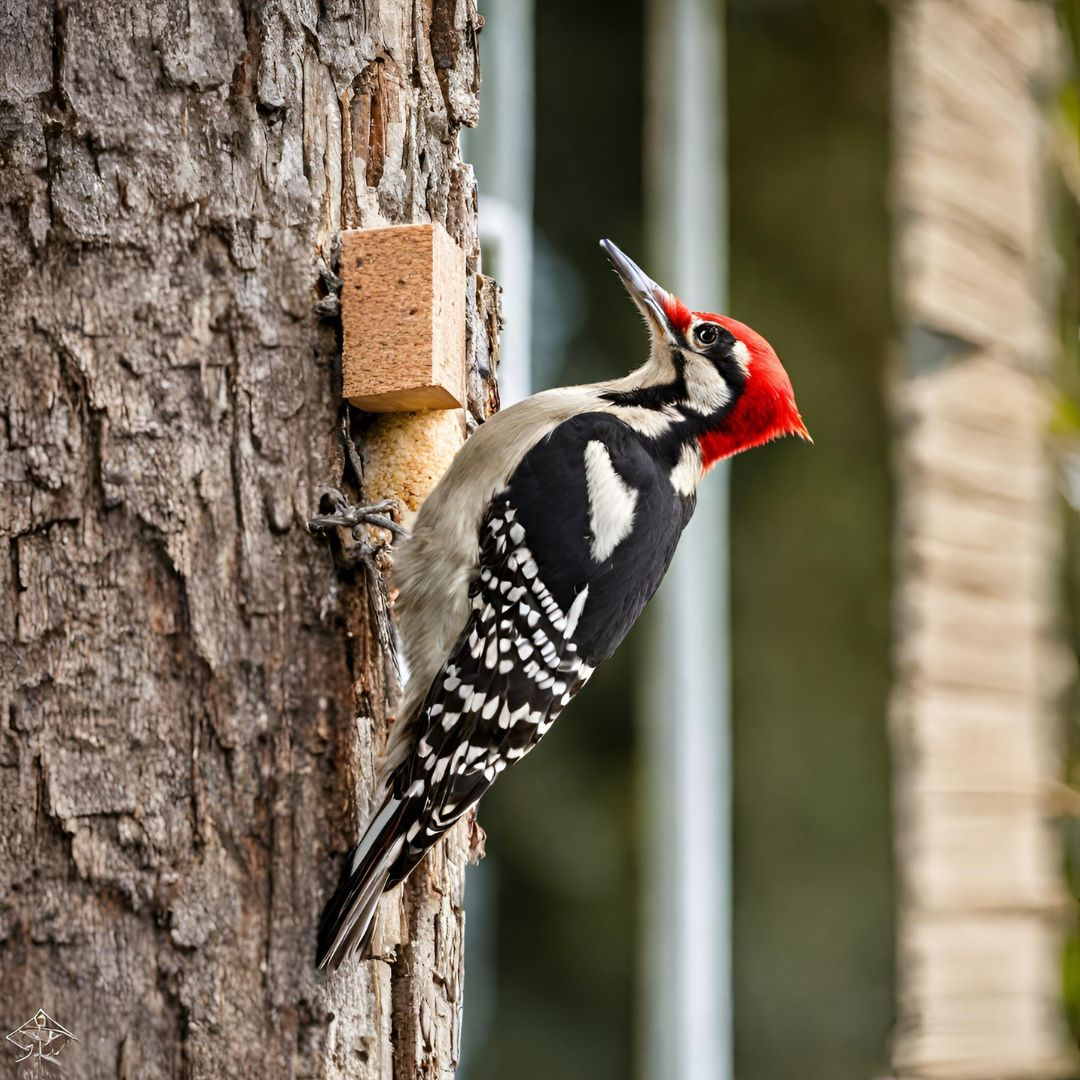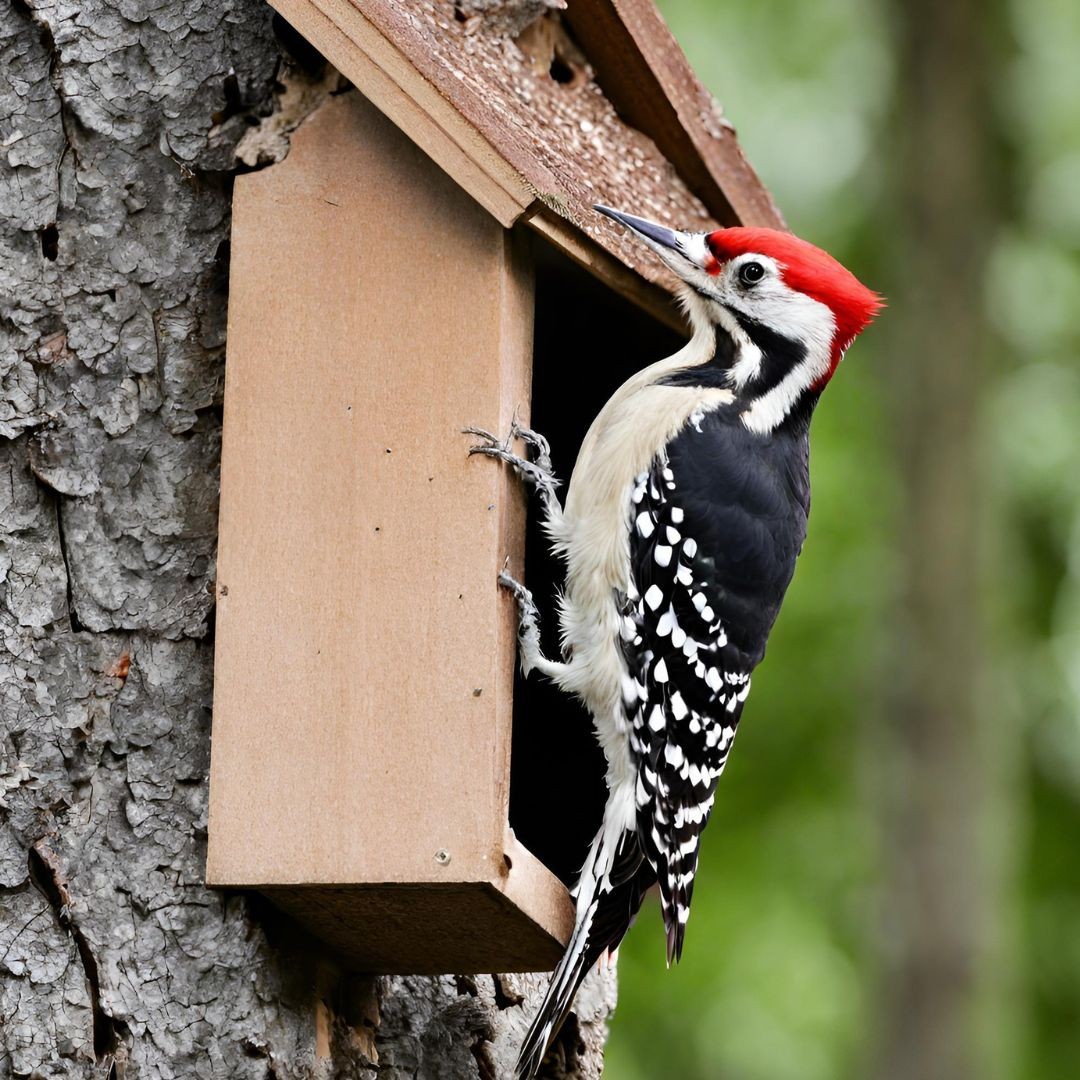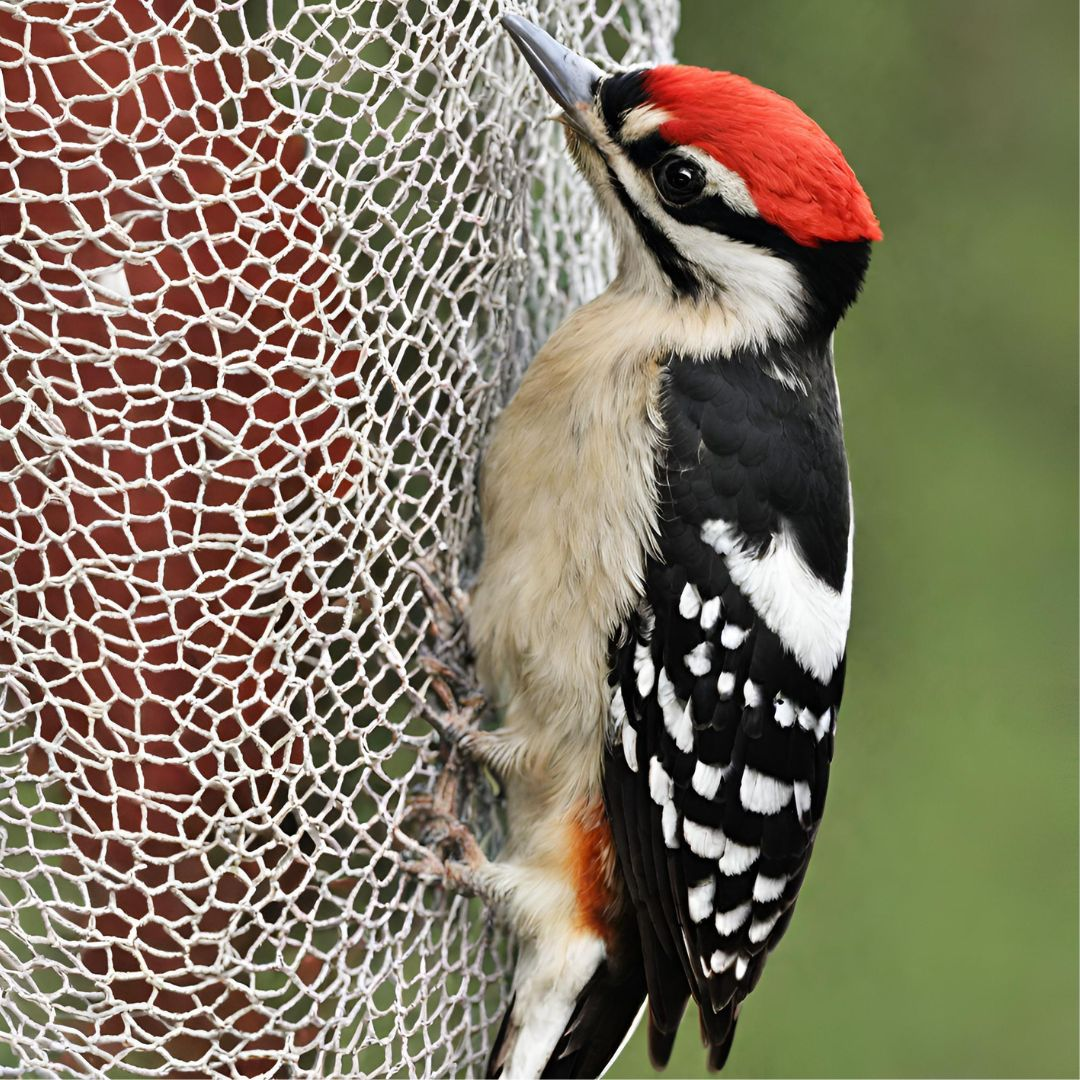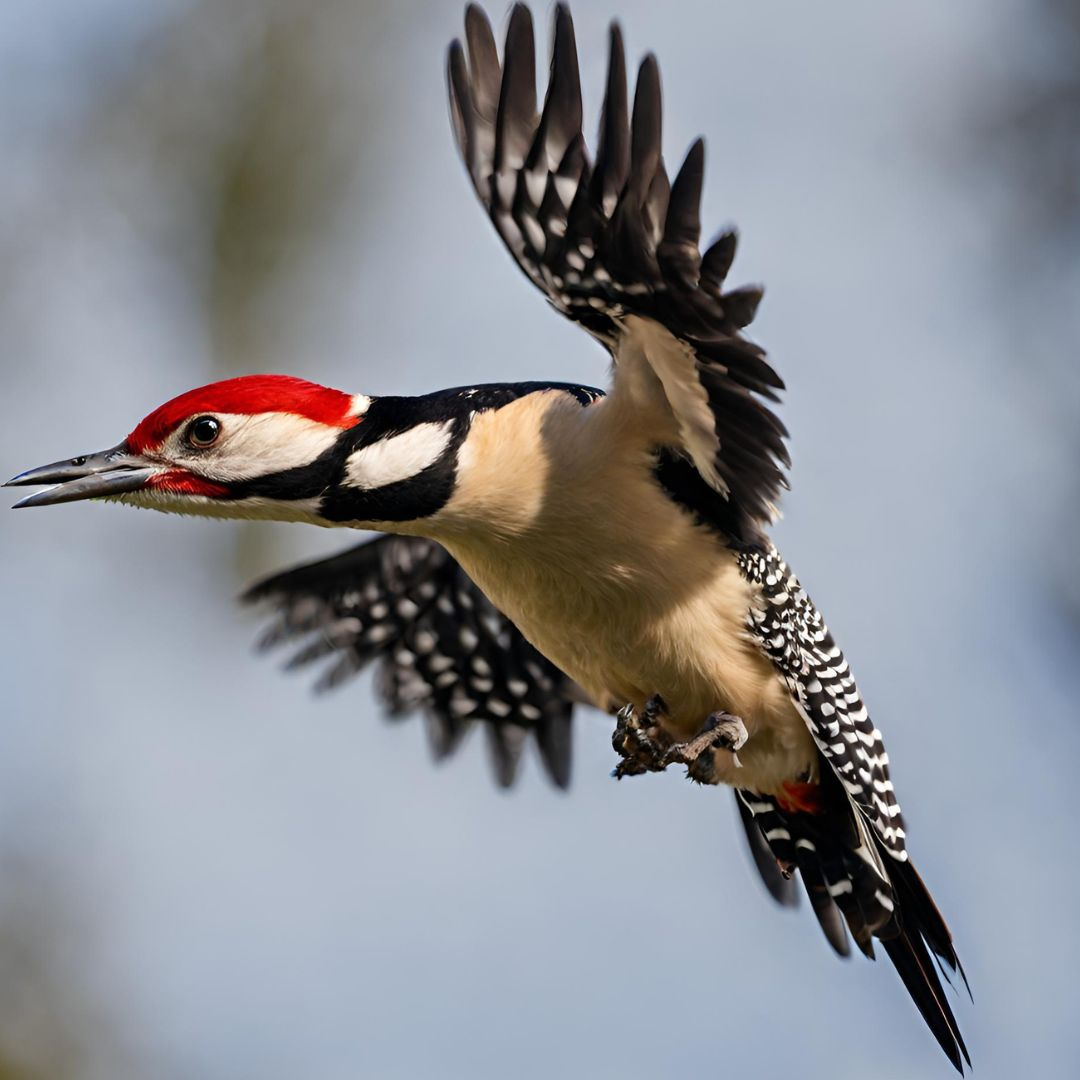Woodpeckers are fascinating creatures, known for their rhythmic drumming and affinity for wooden structures. However, when they start targeting your home, fascination quickly turns to frustration. But don’t worry; understanding these interesting birds and employing humane deterrent methods can help you learn how to get rid of woodpeckers and safeguard your property without causing harm to them. So, are you ready to explore effective solutions to stop woodpeckers from pecking at your house and ensure a peaceful coexistence?
In this comprehensive guide, we will delve into the reasons behind woodpecker behavior, such as communication, nesting, and food searching. We will also discuss various humane deterrent methods, like visual and auditory scare tactics, physical obstacles, and providing alternative food sources and nesting sites. Lastly, we will touch on the importance of legal considerations and professional help to ensure compliance and effective woodpecker control.
Key Takeaways
Understand woodpecker behavior and use humane deterrents to protect property from damage.
Implement visual/auditory scare tactics, physical obstacles, alternative food sources & nesting sites.
Be aware of legal considerations when using control measures & consider expert assistance for effective solutions.
Understanding Woodpecker Behavior

Woodpeckers are renowned for their characteristic drumming sound as well as the harm they cause to wooden structures. Understanding the motivations behind their behavior is a key step in effectively getting rid of woodpeckers, which can be categorized into three primary areas: communication and territory establishment, nesting and mating, and searching for food, such as carpenter bees. By comprehending the reasons behind their actions, we can identify effective deterrents and prevent woodpeckers from causing unappealing damage that may result in insect infestations and other issues.
One way to identify if a woodpecker is present in your residence is by listening for drumming and drilling sounds. Woodpeckers may also be attracted to fruit trees in the area, making them more likely to target your property. Addressing the woodpecker problem promptly is crucial; if left unattended, these birds can inflict significant damage to your house.
So, let’s delve into the different aspects of woodpecker behavior to help you understand how to stop woodpeckers from pecking at your home.
Communication and Territory Establishment
As fascinating birds, woodpeckers use drumming and pecking to communicate and establish territories, which can sometimes result in property damage. Thus, finding ways to get rid of woodpeckers without causing harm becomes necessary to prevent damage as well as stress to the home owner.
In addition to pecking and drumming, woodpeckers also employ vocal communication, consisting of chirps, calls, and trills, which serve various purposes, including courtship, territorial defense, communication within their social groups, and woodpecker distress calls.
An intriguing aspect of woodpecker behavior is their tendency to peck on windows. This is often done as a means of defending their territory or due to confusion caused by their own reflection. A comprehension of these communication and territorial behaviors aids in devising effective, humane deterrents to safeguard your property from woodpecker damage.
Nesting and Mating
During nesting and mating season, woodpeckers exhibit unique behaviors that can cause damage to your home. They:
Excavate nest holes in trees, typically dead or decaying ones
Both male and female woodpeckers participate in the excavation process, which can take one to three weeks
The entrance holes are round and measure approximately one to one and a half inches across, while the cavities inside are six to twelve inches deep
Woodpeckers prefer to nest in dense, mature forests and select sites suitable for nest hole excavation
Woodpecker nesting and mating behavior can have a detrimental effect on wood, as they may:
Hammer on trees or structures to establish territory
Hammer on trees or structures to find a mate
Excavate nesting or roosting holes
Dislodge insects hiding under the bark
Consequently, this behavior can result in damage to the wood.
A thorough grasp of their nesting, mating habits, and bird feeder preferences aids in the development of improved strategies to prevent further pecking and safeguard our homes from woodpecker damage.
Searching for Food
Woodpeckers are primarily insectivorous birds, and their search for food can often lead them to target wooden structures in your home. They are particularly attracted to locations with insect infestations and decaying wood. When woodpeckers peck at your home, they may be creating a single large hole for nesting or a series of small or irregular holes in a line for foraging. Eliminating food sources such as insect infestations and rotting wood can discourage woodpeckers and prevent them from causing further damage to your property.
Addressing the food source that attracts them is a pivotal step in stopping woodpeckers from pecking at your house. By employing pest control measures, you can effectively eliminate insect infestations and rotting wood, which in turn will discourage woodpeckers from targeting your home. Understanding their feeding habits and taking appropriate action can help protect your property from woodpecker damage.
Removing food sources can be one of the most effective deterrents when it comes to dealing with Woodpeckers.
Humane Deterrent Methods

Armed with a better understanding of woodpecker behavior, let’s now explore humane deterrent methods that can help keep these fascinating birds away from your property without harming them. Some effective deterrent methods include visual and auditory scare tactics, physical obstacles, as well as providing alternative food sources and nesting sites. By implementing these humane methods, you can effectively protect your home from woodpecker damage while ensuring the well-being of these interesting birds.
Each deterrent method has its own unique approach to addressing the woodpecker problem, and the effectiveness of these methods may vary depending on the specific situation. In the following subsections, we will delve into each of these humane deterrent methods in detail, providing you with practical and effective solutions to rid your property of woodpeckers.
Visual and Auditory Scare Tactics

Visual and auditory scare tactics can be highly effective in deterring woodpeckers from your property. Reflective objects, such as mirrors, CDs, and aluminum foil, can be used to create visual deterrents that irritate and frighten woodpeckers. Additionally, incorporating shiny objects in your yard can further enhance these visual deterrents. Loud noises, such as banging pots and pans, or playing audio of predators like owls and hawks, can be employed to scare away woodpeckers.
Other examples of visual and auditory scare tactics include wind chimes, ultrasonic devices, and even reflective “scare” tape, which has a glossy surface that repels woodpeckers due to its irritating effect on their eyes. By strategically placing these visual and auditory deterrents around your property, you can effectively frighten woodpeckers away from your home and prevent further damage.
Physical Obstacles

Installing physical barriers, such as bird netting or wire mesh, can help prevent woodpeckers from accessing and damaging your property. Bird netting should be placed over vulnerable areas of your home to prevent woodpeckers from reaching the wood siding. Maintaining a minimum of 3 inches of space between the netting and your property is necessary to prevent birds from causing further damage through the mesh.
Wire mesh, on the other hand, should be constructed with a 3/4-inch or smaller mesh size, which is small enough to stop woodpeckers from passing through. By installing these physical obstacles around your property, you can effectively block woodpeckers from damaging your home while ensuring their safety as well.
Alternative Food Sources and Nesting Sites
Offering alternative food sources and nesting sites can also help discourage woodpeckers from targeting your home. Suet feeders, for instance, are particularly favored by woodpeckers and can be placed away from your residence to attract them. Providing a nest box or a roost box can also give woodpeckers a secure and pleasant environment to nest, preventing them from making nesting holes on your premises.
By offering alternative food sources and nesting sites, you can effectively divert woodpeckers’ attention away from your property and encourage them to nest in more suitable locations. This approach not only helps protect your home from woodpecker damage but also promotes a peaceful coexistence between you and these fascinating birds.
Repair and Prevention Strategies
Besides implementing humane deterrent methods, repairing existing woodpecker damage and taking preventive measures is equally important to protect your property from future problems. Repairing damaged areas, controlling pests, and considering alternative siding materials can all play a crucial role in preventing woodpecker damage.
By addressing these issues, you can effectively eliminate the factors that attract woodpeckers to your property and create a less appealing environment for them. In the following subsections, we will discuss specific repair and prevention strategies that can help you maintain a woodpecker-free home.
Fixing Damaged Areas
Repairing existing woodpecker damage is a crucial step in protecting your property from further harm. Here’s how you can do it:
Use wood putty or epoxy to fill and seal the holes created by woodpeckers.
Allow the putty to dry.
Sand the repaired area to make it smooth.
Finish the area with paint or stain to make it less attractive to the birds.
By following these steps, you can effectively repair woodpecker damage and prevent future damage to your property.
By promptly addressing damaged areas, you can disorient woodpeckers and make it more difficult for them to return to their previous pecking sites. This not only helps protect your property but also encourages woodpeckers to seek alternative locations for nesting and foraging.
Pest Control
Effective pest control is another essential factor in preventing woodpecker damage. Insects, such as termites and carpenter bees, can attract woodpeckers to your property. By eliminating insect infestations and removing rotting wood, you can discourage woodpeckers from targeting your home.
Employing professional pest management services is an excellent way to ensure the thorough elimination of insect infestations, including dead insects. By controlling pests and maintaining a clean and insect-free environment, you can effectively reduce the likelihood of woodpecker damage in the future.
Siding Material Alternatives
Lastly, considering alternative siding materials can help make your home less appealing to woodpeckers. Fiber cement siding and vinyl siding are effective alternatives to traditional wood siding. These materials are less attractive to woodpeckers and can help prevent them from targeting your property.
In addition to being less appealing to woodpeckers, alternative siding materials like aluminum and steel are also more durable and resistant to damage. By investing in these alternative materials, you can not only deter woodpeckers but also enhance the overall longevity and appearance of your home.
Legal Considerations and Professional Help

While it’s important to protect your property from woodpecker damage, ensuring compliance with legal requirements is also of utmost importance and consider the well-being of these fascinating birds. The Migratory Bird Treaty Act is a federal law that protects migratory birds, including woodpeckers, by regulating activities such as:
hunting
capturing
killing
selling
It’s important to be aware of the legal protections for woodpeckers and avoid harming the birds while implementing deterrent measures.
In some cases, it might be necessary to hire expert assistance from wildlife control or pest management companies to ensure effective and humane woodpecker control while complying with legal requirements. These professionals can provide services such as:
trapping and removal of woodpeckers
exclusion services to prevent woodpecker damage
the utilization of effective and humane woodpecker repellents and deterrents
Migratory Bird Treaty Act
The Migratory Bird Treaty Act, enacted in 1918, is an important piece of legislation for the conservation of bird species, including woodpeckers. This act prohibits the taking or possession of migratory birds, their nests, or their eggs without a valid permit. As a homeowner, it’s important that you are familiar with this act and ensure that the methods you employ to deter woodpeckers are in compliance with the law.
Breaching the Migratory Bird Treaty Act can incur penalties such as fines of up to $250,000 for individuals and imprisonment for up to six months. Therefore, considering the legal implications of your actions is of great significance and seek professional assistance if necessary to ensure that you are adhering to the regulations set forth by this act.
Hiring Expert Assistance
Employing expert assistance from wildlife control or pest management companies can be beneficial in ensuring effective and humane woodpecker control while adhering to legal regulations. These professionals have the knowledge and expertise to implement safe and effective deterrent methods, such as trapping and removal, exclusion services, and the use of woodpecker repellents and deterrents.
In addition to providing effective solutions for woodpecker control, expert assistance can also help you navigate the legal complexities associated with the Migratory Bird Treaty Act and ensure that you are in compliance with the law. By seeking professional help, you can protect your property from woodpecker damage while maintaining a responsible and humane approach to wildlife management.
Summary
In conclusion, protecting your home from woodpecker damage requires a combination of understanding woodpecker behavior, implementing humane deterrent methods, repairing damaged areas, controlling pests, and considering alternative siding materials. By taking these steps, you can effectively safeguard your property while ensuring the well-being of these fascinating birds.
Remember, it’s crucial to consider the legal implications of your actions and seek professional assistance if necessary to ensure compliance with the Migratory Bird Treaty Act. By adopting a responsible and humane approach to woodpecker control, you can not only protect your home but also contribute to the conservation of these interesting birds and their natural habitats.
Frequently Asked Questions
What does it mean when a woodpecker visits you?
Seeing a woodpecker is generally seen as a sign of good luck and potential opportunities. This bird symbolizes hard work, determination, and new beginnings. Therefore, if you are fortunate enough to spot a woodpecker, take it as a sign and make sure to pay attention to any potential prospects that could arise in your life.
How do you fill a woodpecker hole?
To fill a woodpecker hole, use an epoxy putty to cover the entire hole. Be sure to overfill it and then sand and paint the area to match your home’s siding once the putty dries.
What kind of house does a woodpecker live in?
Downy woodpeckers make their homes in dead trees, fence posts or tall stumps by excavating gourd-shaped roosting cavities with entrance holes of 114 inches in diameter.
Where is the best place to put a woodpecker house?
For best results, place a woodpecker house 6-20 feet above the ground in open deciduous forests or park-like areas and face it east to receive early morning sun while avoiding prevailing winds. Keep the entrance of the birdhouse away from bird feeders.
How big is a woodpecker house?
A woodpecker house typically has a 6 inch by 6 inch floor, 14 inch floor to ceiling, a 2 inch diameter entrance hole 11 inches above the floor and ventilation openings in the floor and under the roof.

